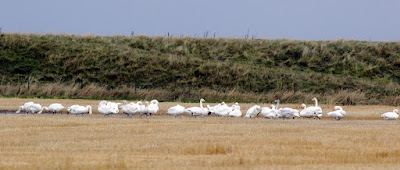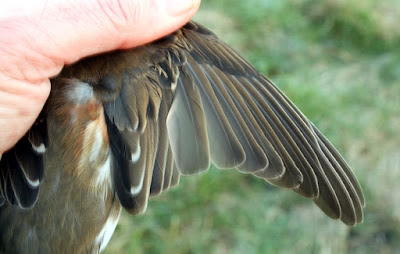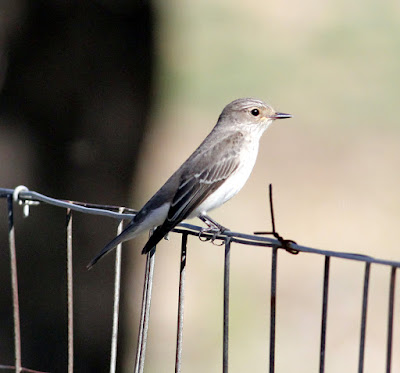Everything was right for a fruitful ringing session. I met Andy at 0645 in the half-light. The air felt almost balmy as a breeze from the south fanned the trees, but just a little too much for our liking. We set the mist nets knowing the preceding week saw mostly poor weather with very few thrushes on the move. Surely Redwings and Fieldfares would be involved in visible migration this morning? We gulped half a cup of coffee each and then waited.
The Ringing Office
We didn’t wait too long before the thrushes began to arrive from the north. They came in tens, twenties and hundreds strong throughout the morning until by by1145 we’d counted approximately 2200 Fieldfares and almost 400 Redwings. Some of the flocks were mixed but always dominated by Fieldfares while the bigger flocks of several hundred proved to be exclusively Fieldfares.
Perhaps because of the steady 10-15 mph breeze a number of flocks arrived from a low elevation and often appeared without warning as they flew above nearby trees to then pass over us. The movement of all birds this morning was 100% north to south.
The less than ideal wind speed almost certainly limited our overall catch but we were happy with the morning’s total of birds caught and the species: 4 Fieldfare, 4 Redwing, 4 Goldfinch, 3 Coal Tit, 2 Blue Tit and one each of Sparrowhawk, Blackbird, Greenfinch, Great Tit and Goldcrest.
Fieldfare
Fieldfare
Redwing
The Sparrowhawk proved to be a large and feisty handful of an adult female. The orange eye told us she was an older female. Sparrowhawks are short-lived compared to other birds of prey. The average lifespan for a Sparrowhawk is 2.7 years and although very few live longer than seven years the oldest known ringed bird was one 17 years of age. A female Sparrowhawk takes a larger ring size than the much smaller male of the species and the talons of the female need to be avoided when handling one.
Sparrowhawk - adult female
Sparrowhawk - adult female
Apart from the thrushes there was a steady movement of finches this morning involving mainly Chaffinch and Greenfinch with a couple of Bramblings and Lesser Redpolls noted.
Otherwise, 3 Whooper Swans flying west.
More news soon from Another Bird Blog. Stay tuned.
Meanwhile, linking to Anni's Blog.
More news soon from Another Bird Blog. Stay tuned.
Meanwhile, linking to Anni's Blog.

























































































